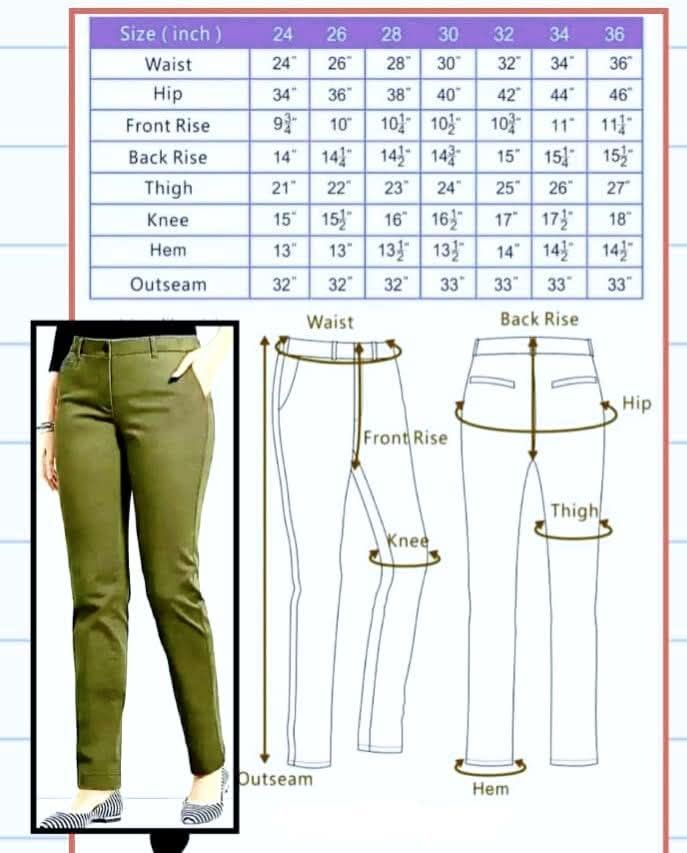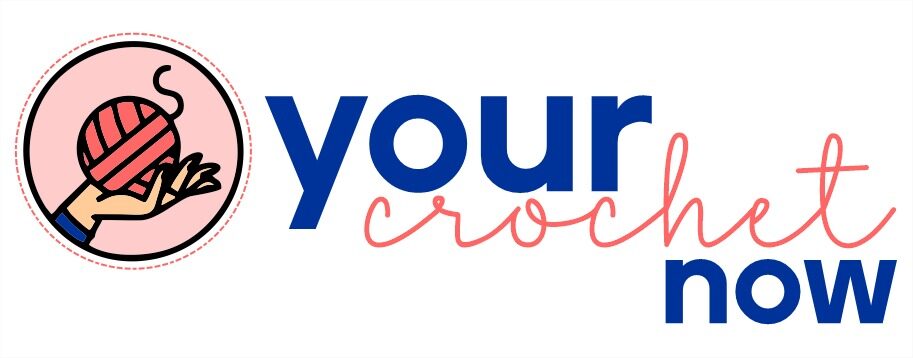Sewing your own pants may seem like a challenge at first, but once you understand the measurement chart, everything becomes easier and more exciting. A pants measurement chart is a simple tool that helps you select the right sewing pattern size, ensuring your final project fits comfortably and looks professional. In this tutorial, we will break down each part of the chart, explain how to take accurate measurements, and guide you through the process of creating pants that suit your style perfectly. Whether you are a beginner in sewing or have some experience, this step-by-step guide will help you feel confident and inspired.
The image above shows a typical pants measurement chart along with a diagram that labels the key areas of measurement, such as waist, hip, thigh, knee, hem, rise, and outseam. Understanding what these terms mean and how to apply them to your sewing pattern will save you from mistakes and wasted fabric. By the end of this tutorial, you’ll not only know how to read a pants measurement chart but also how to personalize your sewing project for a perfect fit. Let’s get started!
Understanding the Pants Measurement Chart
Before you pick up your sewing tools, it’s important to learn what each measurement on the chart represents. The waist measurement shows the size around the narrowest part of your torso, while the hip measurement represents the widest part of your body around the seat. The front rise and back rise refer to how high the pants rise in the front and back, influencing comfort and fit. Thigh, knee, and hem measurements show the width of the pant legs at different levels, and the outseam is the total length of the pants from waist to hem.
Each size in the chart corresponds to these measurements in inches. For example, if your waist is 28 inches and your hip is 38 inches, you might choose size 28. However, sewing patterns often allow for slight adjustments, so it’s always good to compare your personal measurements with the chart before cutting fabric. A well-read chart prevents tight waistbands, sagging hips, or overly wide hems that could affect your finished look.
Remember that measurement charts are guides, not strict rules. Every body is unique, and sewing gives you the freedom to make small changes for a custom fit. Understanding these numbers is the first step toward creating pants that feel comfortable and showcase your personal style.
Materials You Will Need
When working with pants sewing patterns and measurement charts, having the right materials will make the process smoother. Here’s a list to get started:
- Measuring tape – Flexible tape to measure your waist, hips, thighs, and other areas accurately.
- Notebook and pen – To write down your measurements and compare them with the chart.
- Fabric – Choose a material that suits the pants style you want (cotton, denim, linen, or stretch fabric).
- Sewing pattern – A pants sewing pattern that includes clear measurement charts and step-by-step instructions.
- Pins and scissors – For cutting and securing fabric before sewing.
- Sewing machine and thread – Basic tools for assembling your pants.
Optional but helpful items include tailor’s chalk for marking adjustments, elastic bands for waist adjustments, and a serger to finish seams neatly. By preparing all materials before you start, you’ll avoid interruptions and stay focused on enjoying the sewing process.
Step-by-Step: Taking Your Measurements
- Waist – Wrap the measuring tape around the narrowest part of your torso, usually just above the belly button. Keep the tape snug but not too tight.
- Hip – Measure the fullest part of your hips, usually around the seat. Stand naturally without sucking in or pushing out.
- Front Rise and Back Rise – Sit on a flat surface and measure from your waistline down to the seat for the back rise, and from the waistline in front to the crotch for the front rise.
- Thigh and Knee – Wrap the tape around the widest part of your thigh and then around your knee.
- Hem and Outseam – The hem refers to the width of the pant leg opening, while the outseam is measured from the waist to the desired pant length along the side of the leg.
Write down each measurement carefully and compare them with the pants measurement chart. If you fall between two sizes, it’s often better to choose the larger size and make small adjustments during sewing. This ensures comfort and prevents the pants from being too tight.

Adjusting the Sewing Pattern
Once you have compared your numbers with the chart, it’s time to adjust the sewing pattern if needed. For example, if your waist is smaller than your hip measurement suggests, you may need to blend sizes on the sewing pattern. This is done by drawing a smooth line from the waist size down to the hip size before cutting the fabric. Similarly, if your thigh measurement is larger, you can widen that section of the sewing pattern for extra comfort.
You can also adjust the rise depending on your preference. If you like high-waisted pants, extend the rise measurement; for a lower fit, shorten it slightly. The beauty of sewing your own clothes is that you can personalize the pattern until it matches your vision. Don’t forget to add seam allowances when making changes, especially if the original sewing pattern already includes them.
By practicing small pattern adjustments, you’ll quickly build confidence. Soon, you’ll find that measurement charts aren’t intimidating—they’re helpful tools that let you design pants that truly fit your body shape.
Sewing Your Pants
After measurements and adjustments, it’s time to start sewing. Cut your fabric pieces according to the adjusted sewing pattern, making sure all markings are transferred correctly. Pin the pieces together and sew the main seams, beginning with the inseam and outseam. Next, attach the waistband and finish the hem. Always try the pants on during the process to confirm the fit. Making adjustments early prevents bigger issues later.
If you’re new to sewing, start with simple fabrics like cotton or linen. These materials are easier to handle compared to stretchy or slippery fabrics. Follow your sewing pattern step by step, and don’t rush—patience leads to a more polished result. The more you practice, the more natural sewing pants will feel.
Finally, press the seams with an iron for a clean, professional finish. Proper ironing not only improves the look but also helps the pants hold their shape. Congratulations—you’ve sewn your own custom-fit pants using the measurement chart as your guide!
Personalization Ideas
One of the best parts of sewing your own pants is adding personal touches. You can customize the waistband with elastic for extra comfort or add belt loops if you prefer a structured look. Pockets are another fun option—choose patch pockets, side-seam pockets, or even cargo-style pockets depending on your taste. Decorative stitching or contrast thread can also bring a unique flair to your project.
Experiment with different fabrics to create versatile styles. Use denim for classic jeans, linen for breezy summer pants, or wool for a more formal look. You can even mix fabrics for a bold, modern style. Each choice makes the pants more personal and reflects your creativity.
Don’t be afraid to step outside traditional designs. Cropped hems, wide-leg styles, or tapered cuts are all possible once you understand the sewing pattern. With the pants measurement chart as your foundation, personalization becomes an exciting adventure.
Final Thoughts: Share Your Sewing Journey
Learning to read a pants measurement chart and applying it to a sewing pattern is an empowering skill. It helps you take control of your clothing fit and style while boosting your sewing confidence. Every measurement you take brings you closer to creating pants that are not only comfortable but also perfectly tailored to your unique body shape.
Now that you know the step-by-step process, it’s time to put it into practice. Gather your materials, take your measurements, and start sewing. Don’t worry if your first pair isn’t flawless—each project is a valuable lesson that brings improvement. Over time, you’ll notice that sewing pants feels more natural and enjoyable.
We’d love to see your creations! Share your sewing projects with your friends, family, or online sewing communities. By sharing your journey, you inspire others to pick up their sewing machine and explore the joy of making their own clothes. Happy sewing!
